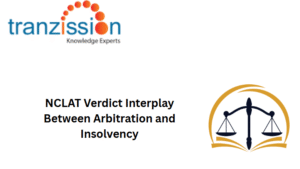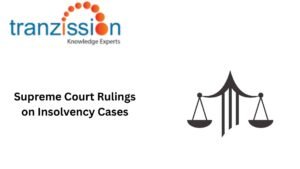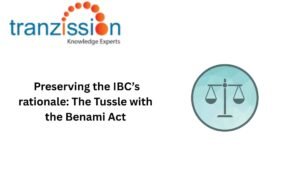
Who can initiate corporate insolvency resolution process
Table of Contents
The ccorporate insolvency resolution process profession is a mechanism under the Insolvency and Bankruptcy Code, 2016 (IBC) for company’s who are facing financial distress to either revive, rehabilitate, or resolve their situation. This includes the involvement of the corporate debtor’s creditors, insolvency professionals, and the Adjudicating Authority, which is the National Company Law Tribunal (NCLT),
Creditors Under IBC
According to section 6 of the IBC, a financial creditor, an operational creditor, and the corporate who commits the default can initiate the CIPR:
By Financial creditors:
Section 5(7) of the IBC, defines a financial creditor as an individual to whom the corporate debtor owes a financial debt and to whom such debt is legally transmitted or assigned.Financial creditors can make an application before the NCLT to initiate the CIRP as per section 7 of the IBC. The application and certain documents have to submitted before the NCLT for such an initiation:
- Record of the default recorded with the information utility or such other record or evidence of default
- Name of the resolution professional proposed to act as an interim resolution professional (IRP)
- Any other information
By Operational creditors:
A person to whom the debtor owes an operation debt and includes persons to whom such amount has been legally transferred or assigned for services or goods given by them is known as the ‘operational creditor’. Section 9 describes the application for initiating the CIRP by an operational creditor after the expiry of 10 days from the delivery of the notice or the invoice demanding payment of the unpaid operational debt as per section 8(1). The documents that must be submitted along with the application are:
- Copy of the invoice demanding payment or demand notice delivered by the operational creditor to the corporate debtor
- An affidavit to the effect that there is no notice given by the corporate debtor relating to a dispute of the unpaid operational debt
- Copy of the certificate from the financial institutions maintaining accounts of the operational creditor confirming that there is no payment of an unpaid operational debt
- Copy of any record with information utility confirming that there is no payment of an unpaid operational debt
- Any other proof confirming that there is no payment of an unpaid operational debt or other such information
By the Corporate debtor:
When a corporate debtor commits a default, a corporate applicant can file an application for initiation, as stated in section 10. The corporate applicant has to provide the following documents along with the application:
- Information relating to its books of accounts and such other documents for the period
- Information relating to the proposed resolution professional (RP) to be appointed as an IRP
- The special resolution passed by shareholders of the corporate debtor or the resolution passed by at least three-fourth of the total number of partners of the corporate debtor approving filing of the application. Read related article Offences and Penalties under IBC, 2016.
The corporate insolvency resolution Process: Step-by-Step
Initiation of CIRP
The financial creditors, operations creditors, or the corporate debtor can file an application before the NCLT to initiate the CIRP, under section 7, 9, and 10 of the IBC, respectively. As per section 8, the operational creditor has to deliver a demand notice of the unpaid operational debtor a copy of an invoice demanding payment of the amount involved in the default to the corporate debtor.
The corporate debtor should within 10 days of receiving the demand a notice or copy of the invoice to bring to the notice of the operational creditor the existence of a dispute or the payment of the unpaid debt. The RP can file an application to the NCLT to extend the period or may be instructed to do so at a meeting of the Committee of the Creditors (CoC) by a vote of 66% of the voting shares. The timeline of the CIRP can be extended.
NCLT’s Role
The NCLT shall either accept or reject the application within 14 days of receiving the application by an order. If the NCLT rejects the application or there are any disciplinary proceedings pending against the proposed resolution professional, they have to give a notice to the applicant to rectify any defects in his application within 7 days from the receipt of such notice. The CIRP will commence from the date of admitting the application. As per section 12, the CIRP should be completed within 180 days from the admission of the application.
Moratorium and Public Announcement
The NCLT declares a moratorium and causes a public announcement made after the appointment of the IRP under section 13 of the IBC.
Declaration of Moratorium
The actions that are prohibited during the moratorium period are listed in section 14:
- Continuation or institution of suits or proceedings against the corporate debtor
- transferring, encumbering, alienating or disposing off by the corporate debtor any of its assets or any legal right or beneficial interest
- any action to foreclose, recover or enforce any security interest created by the corporate debtor in respect of its property including any action under the Securitisation and Reconstruction of Financial Assets and Enforcement of Security Interest Act, 2002
- recovery of any property by an owner or lessor where such property is occupied by or in the possession of the corporate debtor
Public Announcement
The public announcement should contain the following information:
- name and address of the corporate debtor
- name of the authority with which the corporate debtor is incorporated or registered
- the last date for submission of claims
- details of the IRP who shall be vested with the management of the corporate debtor and be responsible for receiving claims
- penalties for false or misleading claims;
- the date of the closure of the CIRP
Appointment of Interim Resolution Professional
The IRP is appointed by the NLCT on the commencement of the insolvency process. The IRP has the responsibility to manage the affairs of the corporate debtor as stated in section 17. The duties of the IRP are under section 18 and include to collect the all necessary information to determine the financial position of the corporate debtor, such as the business operations for the previous 2 years, financial and operational payments for the previous 2 years, list of assets and liabilities as on the initiation date, etc, to receive and collate all the claims submitted by the creditors pursuant to the public announcement, constitute the CoC, monitor the debtors assets and manage its operations until the RP is appointed by the CoC, file information collected with the information utility, take control and custody of any asset which the corporate debtor has ownership rights as recorded in the balance sheet of the corporate debtor, and other such duties as may be specified by the Board.
Committee of Creditors
The IRP constitutes the CoC after collation of the claims received against the corporate debtor and determination of the financial position of the debtor. The CoC comprises all the financial creditors of the debtor. The CoC should hold the first meeting within 7 days of its constitution, and during this meeting, appoint or replace the IRP through a majority vote of not less than 66% of the voting share of the financial creditors.
Role of the Resolution Professional
The process of appointing the resolution professional (RP) is given under section 22. If the CoC decides to continue with the IRP as the RP, subject to a written consent from the IRP, and communicate this to the IRP, the corporate debtor, and NCLT. If they have decided to replace the IRP, an application has to be filed before the NCLT for the appointment of the proposed RP. The NCLT appoints the proposed RP after confirmation of the Insolvency and Bankruptcy Board of India. The RP main role of nclt is to conduct the CIRP and manage the debtors’ operations during the entire process.
Preparation of Information Memorandum
The information memorandum is a memorandum prepared by the RP according to the specifications under section 29. It is a comprehensive documents that includes all the relevant information of the corporate debtor, its operations, financial statements, debts and any other information that is required by the resolution applicant, as mentioned under Regulation 36(2) of the Insolvency and Bankruptcy Board of India (Insolvency Resolution Process for Corporate Persons) Regulations, 2016. This document provides a platform where all potential investors and buyers have the same information, the stakeholders are informed throughout the CIRP, and a foundation for preparing the resolution. As it consists of detailed information which need to be accurate and constantly updated, it is recommended to be drafted by an expert.
Resolution Plan: Approval or Liquidation
Here mention Criteria for evaluating the resolution plan (payment of debts, management, legal compliance, etc.) and Voting procedure for approving the resolution plan (66% majority) and mention about NCLT’s final approval process for the resolution plan and
Consequences of approval: binding on stakeholders, employees, government, etc Mention about NCLT’s liquidation order and appointment of a liquidator and Process of asset distribution among stakeholders
Conclusion
The corporate insolvency resolution process has the main aim to revive, rehabilitate, or restructure the company under financial distress. The successful outcome of the CIRP may result in the repayment of the corporate debt, if the company is restructured, there will be a change in the management or the business may continue under a completely new ownership. In short, CIRP is an important resolution mechanism that ensures that the creditors recover their debts from the corporate debtors. Further, CIRP also protects the corporate debtor’s assets, as the assets are realised and distributed equally among the creditors expeditiously as well as economically, and the insolvent is discharged from the demands of the creditor.





